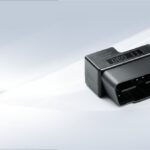When you disconnect the battery in your 2012 Subaru Legacy, you might be inadvertently erasing important settings from your car’s computer systems. These settings, often learned over time to optimize performance, along with your radio presets and clock, rely on a constant power supply. While some vehicles allow for maintaining this power through the accessory power outlet, Subaru models, including the 2012 Legacy, do not offer this feature as those outlets are not constantly powered. Therefore, understanding the role of the OBD2 fuse becomes crucial when dealing with battery changes or disconnections in your 2012 Subaru Legacy.
The OBD2 Port as a Power Source for Memory Maintenance
For Subaru owners and technicians working on a 2012 Subaru Legacy, maintaining these crucial memory settings during battery disconnection requires an alternative power source. One such readily available point is the On-Board Diagnostics II (OBD2) connector. Specifically, pin 16 of the OBD2 port is designed to be constantly powered, making it a viable option for temporarily supplying power to the car’s systems while the main battery is disconnected.
Many automotive service centers utilize specialized adapters to connect a 12V power source, like a portable jump starter, to the OBD2 port, leveraging this pin 16 connection. This method is often fused for safety, typically using a 7.5 Amp fuse to protect the vehicle’s electrical system. This setup allows for a seamless battery change without losing memorized data, assuming power demands remain within the fuse’s limit.
The Role and Risk of the 7.5 Amp OBD2 Fuse
The 7.5 Amp fuse in this OBD2 power maintenance setup is a critical safety component. It’s designed to protect the system from overcurrent. While the modules requiring constant power draw a minimal amount of current, the system’s vulnerability arises when additional electrical components are activated during this process.
For instance, simply opening a door can trigger interior lights and other accessory systems, potentially drawing several Amps of current. If the combined current draw exceeds the 7.5 Amp limit of the OBD2 fuse while the car battery is disconnected, the fuse will blow. This is a safety mechanism functioning as intended to prevent damage from excessive current.
When this fuse blows, the consequence is the same as if no power maintenance was attempted at all – the radio presets, clock, and engine control module (ECM) learned settings are lost. Drivers typically notice this by the reset clock and radio, and sometimes experience a period of rough idling until the ECM recalibrates and “relearns” the optimal engine parameters.
Troubleshooting and Avoiding a Blown OBD2 Fuse
A blown OBD2 fuse related to battery disconnection is a common occurrence, often unintentional. It’s plausible that a technician attempting to maintain power via the OBD2 port on a 2012 Subaru Legacy might inadvertently trigger a system that exceeds the fuse’s capacity, causing it to blow.
It’s important to note that this blown fuse itself will not trigger a Check Engine Light (CEL). However, it can prevent a code reader from functioning if the reader relies on the car’s power supplied through the OBD2 port. If you are attempting to read diagnostic codes and find your reader is unresponsive, checking the OBD2 fuse, particularly after a battery service, is a good first step.
To avoid blowing the OBD2 fuse when maintaining power during battery disconnection on your 2012 Subaru Legacy, ensure that all electrical accessories are turned off. Keep doors closed, interior lights off, and avoid activating any systems that could draw significant power. By understanding the function and limitations of the 2012 Subaru Legacy Obd2 Fuse in this context, you can perform battery maintenance more effectively and prevent unexpected memory loss.
